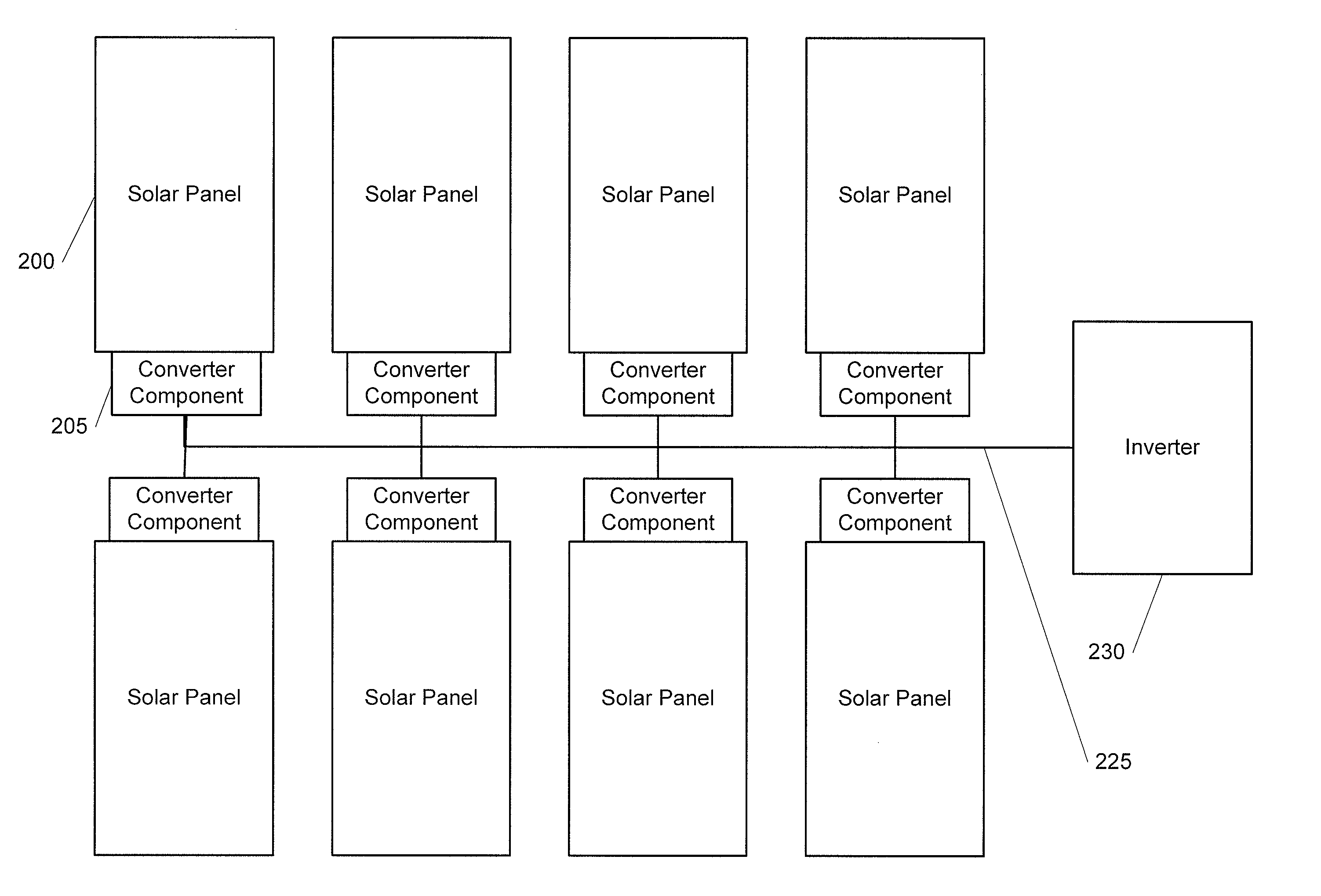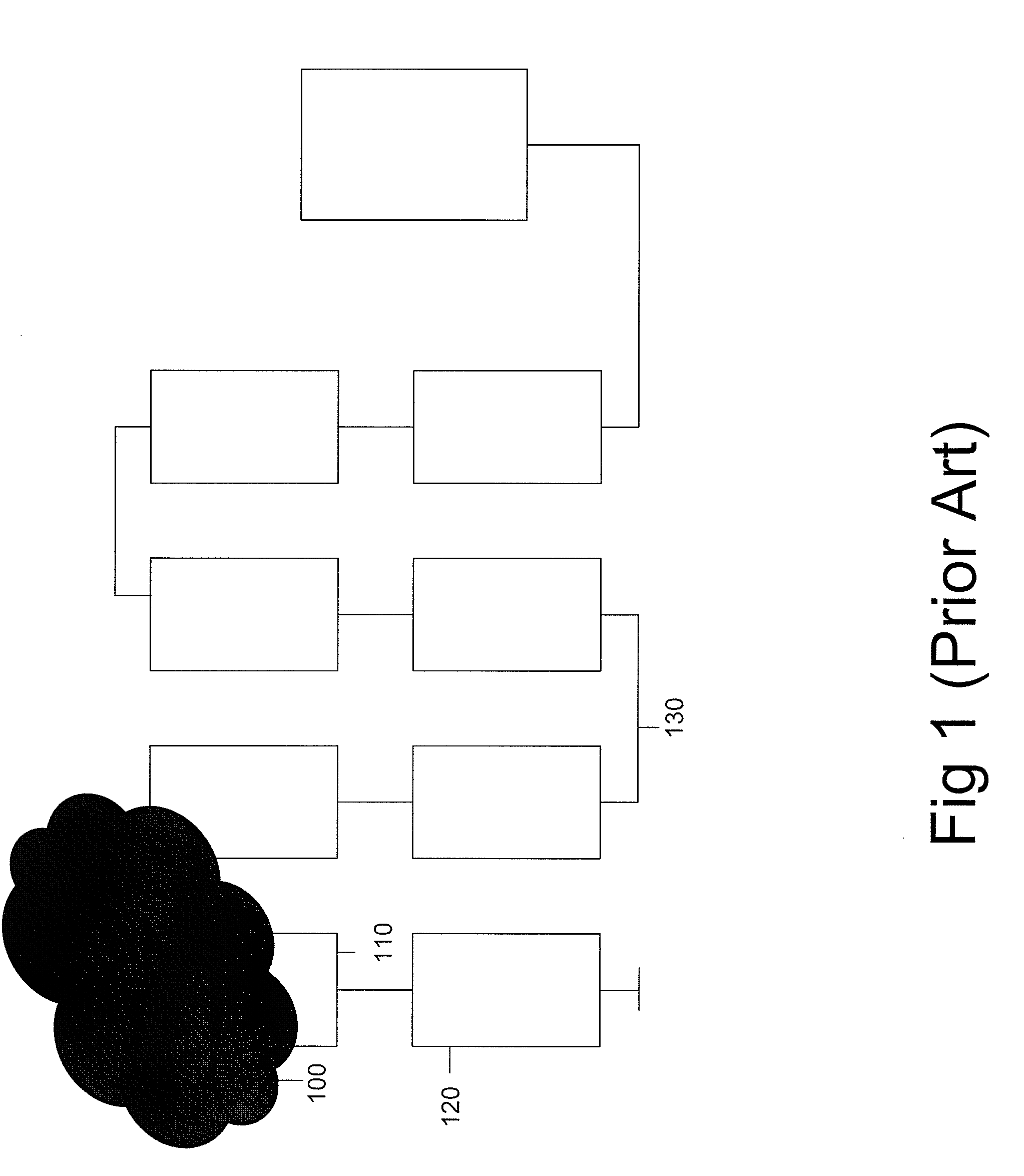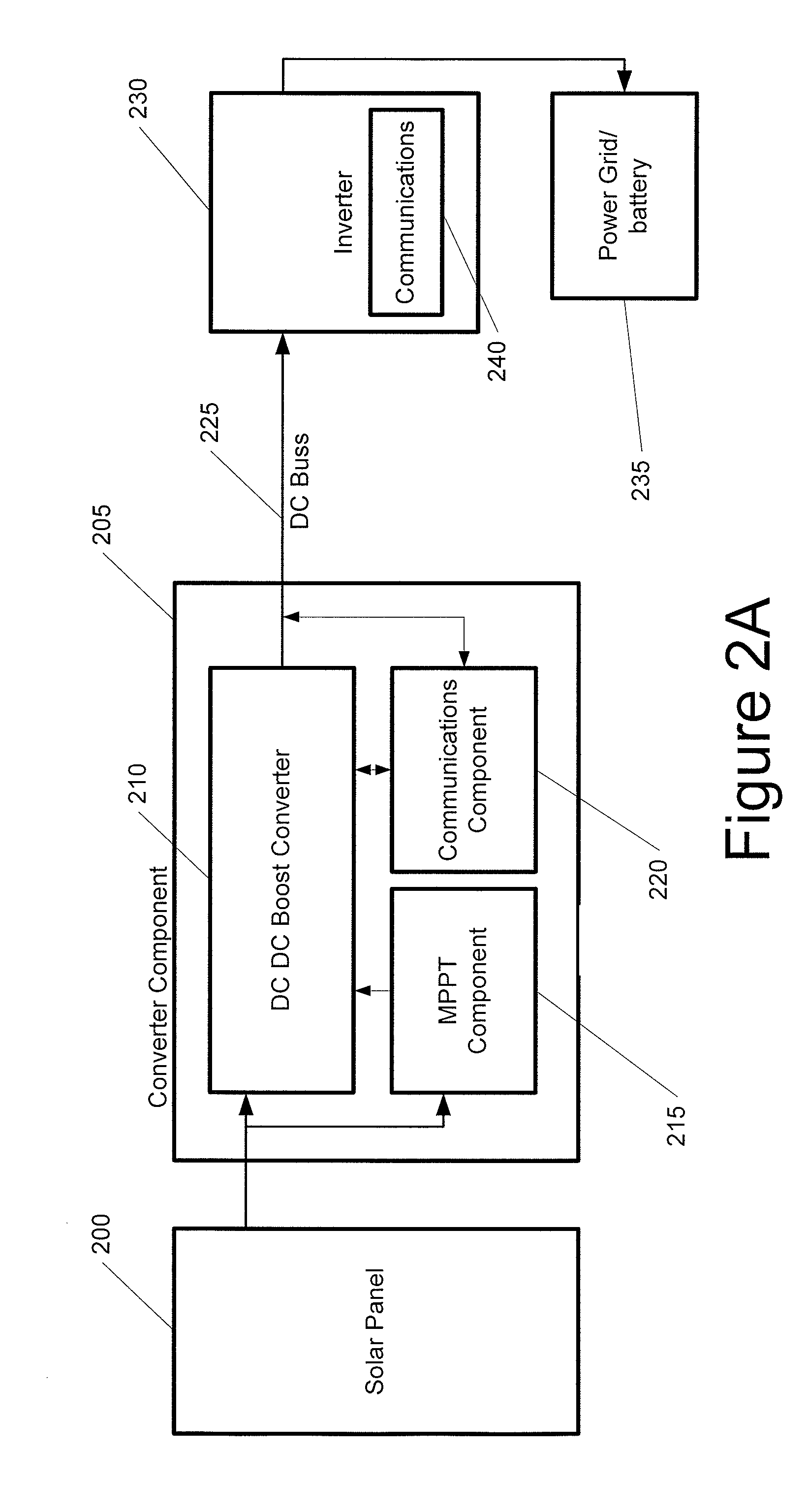Advanced renewable energy harvesting
a technology of renewable energy and power management, applied in the direction of electric variable regulation, process and machine control, instruments, etc., can solve the problems of limiting the overall or maximum system power, and affecting the efficiency of the overall system power, so as to maximize the power of each panel, minimize transmission wire losses, and efficiently invert the dc to ac voltage
- Summary
- Abstract
- Description
- Claims
- Application Information
AI Technical Summary
Benefits of technology
Problems solved by technology
Method used
Image
Examples
Embodiment Construction
[0026]The invention is a system and method for harvesting electrical energy from solar panels and for converting it into energy. Each solar panel is coupled to a converter component, which is connected in parallel to a DC power buss. The converter component includes a DC DC boost converter for boosting the panel's output voltage for DC transmission on a power buss, an MPPT component for maximizing energy transfer between the panel and the transmission buss, and a communication component for receiving information about the panel and transmitting the information to a user and a company that manages the panels. The power buss is connected to an inverter for changing the power from a direct current (DC) to an alternating current (AC) and generating an AC that is in phase with the power grid.
[0027]One embodiment of the system for each solar panel is illustrated in FIG. 2A. In one embodiment, the power is obtained from solar panels 200. In another embodiment, the power is obtained from an...
PUM
 Login to View More
Login to View More Abstract
Description
Claims
Application Information
 Login to View More
Login to View More - R&D
- Intellectual Property
- Life Sciences
- Materials
- Tech Scout
- Unparalleled Data Quality
- Higher Quality Content
- 60% Fewer Hallucinations
Browse by: Latest US Patents, China's latest patents, Technical Efficacy Thesaurus, Application Domain, Technology Topic, Popular Technical Reports.
© 2025 PatSnap. All rights reserved.Legal|Privacy policy|Modern Slavery Act Transparency Statement|Sitemap|About US| Contact US: help@patsnap.com



